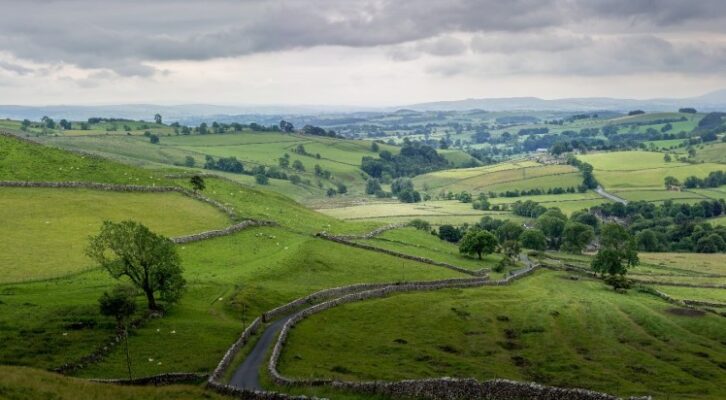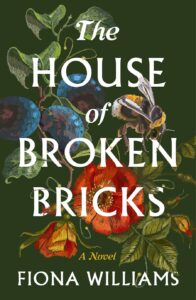
What Do You Get When You Cross the Contemporary Novel with Nature Writing?
Fiona Williams on Using Every Literary Tool Available to Us
So, what do you get when you cross the contemporary novel with nature writing? Over the past few years, I’ve watched this question being approached from many angles. First, there’s nature writing masquerading as prose. You know, the new literary genre of our times, where the writer skillfully leans hard-won scientific knowledge and real-life encounters of the natural world against a heartfelt, memoir-style backdrop.
Here, I’m thinking of accomplishments such as Kingbird Highway by Kenn Kaufman, The Grassling by Elizabeth-Jane Burnett, Thin Places by Kerri ni Dochartaigh, Helen Macdonald’s H is for Hawk, Robin Wall Kimmerer’s Braiding Sweetgrass, Amanda Thompson’s Belonging and Oddný Eir’s Land of Love and Ruins.
Then there’s eco-fiction, where the bitter pill of our failing relationship with our planet is cocooned within an adept body of work shaped like a novel—excellent examples I have encountered include Barkskins by Annie Proulx, The Wall by Marlen Haushofer, Ned Beauman’s Venomous Lumpsucker, Margaret Atwood’s dystopian Oryx and Crake, Arundhati Roy’s The God of Small Things, Ben Smith’s Doggerland, Pitchaya Sudbanthad’s Bangkok Wakes to Rain and Richard Powers’ vitally important The Overstory.
Like other writers who find inspiration in nature, I wanted to use it to contribute richness and depth to the story.
And then, there’s the angle I’m pushing. For what I’m interested in is the novel, first and foremost, but where the characters and their plot are underpinned by a fine-weave sewn from nature’s elements. My favorite contemporary examples of this entangled form include Waterland by Graham Swift, Daisy Johnson’s Everything Under, Jennifer Nansubuga’s The First Woman, Prodigal Summer by Barbara Kingsolver, How Much of These Hills Is Gold by C Pam Zhang, Irene Sola’s captivating When I Sing, Mountains Dance, Jesmyn Ward’s Salvage the Bones, Tan Twan Eng’s The Gift of Rain and Elif Sharaf’s The Island of Missing Trees.
There is no doubt that these novels are primarily focused on other, more decidedly urgent things—motherhood, feminism, war, migration, poverty, tragedy, marital crisis and family conflict—but very quickly, nature, in all its forms, rises up from the pages as an ever-present sub-character and plays an as important role in the narrative as the more familiar human themes of love, grief, friendship and betrayal.
I, too, am one of those writers who can’t resist calling on nature to help me build strong foundations upon which to explore the multifacetedness of the human condition. The House of Broken Bricks is set in a fictional village situated on the very real Somerset Levels in southwest England. This is a liminal space that despite ongoing modernization is constantly fighting to revert into ancient marshlands. Here the flora and fauna intrude into everyday living, whether it be through the ritual hunting of roe deer come autumn, the picking of ripe sloes for gin, the return of house martins every spring or the war against cabbage white caterpillars on the salad greens.
Like other writers who find inspiration in nature, I wanted to use it to contribute richness and depth to the story, and to amplify my characters’ emotions and expose the inner workings of their fragile identities. In the novel, young Max’s flightiness and inability to ground himself in reality was captured in feathers and a love of all things that fly, whether they be birds or insects. Whereas, his twin brother Sonny, whose wonder for life flows like the minnows in his beloved river, has his roots firmly planted beside the fossils and leatherjackets inhabiting the soil beneath their home.
For their mother Tess, her isolation as a Londoner of Jamaican heritage living in a rural part of Britain that sees few black people is framed by the bleakness of a floodplain, where leafless hawthorns are silhouetted in stark contrast against the pale setting of winter. And as a man of few words, her husband Richard must communicate his feelings through the growing of vegetables and the small, yet vital, ecosystem of the back garden. I found that nature was also an effective tool with which to generate seasonal atmosphere and to examine the connections between English and Jamaican culture.
Biological and cultural diversity are inextricably linked, and our relationship with nature is inescapable.
Of course, the use of nature as a literary tool is not new. The natural world has always been a source of inspiration for writers. Both Dickens and Hardy—having evolved from the late 18th century’s Romanticism movement in which nature was given as equal importance in literature as religion—freely pillaged nature’s bounty and the landscape that was home to it. And it is important to remember that this attraction has historically been a global phenomenon and not solely confined to the wild moors of England.
If we look all the way back to the 11th-century Japanese classic The Tale of Genji by Murasaki Shikibu, one of our earliest novels, we will find intricate scenes depicting the beauty of nature woven into prose, history and poetry in order to showcase the botany and wildlife of the Heian era and, more interestingly, to enhance the complex emotional experiences of the novel’s extensive cast of characters. Fast forward to the present day and our affection for our natural surroundings as displayed in literature is no less important for, indeed, it has become part of the bedrock of our collective memories.
So, if I return to the original question—what do you get when you cross the contemporary novel with nature writing? Well, what you get is a reading experience that constitutes a free, and somewhat subconscious, pass to the most wondrous and amazing resource that we’ve ever had, and will ever have, access to.
Storytelling is one of our most valuable forms of human expression. So, if when focusing on a novel’s characters and the minutiae of their lives, there comes unbidden from the background a subtle, but persuasive, influx of nature-inspired imagery, wordplay, metaphor and symbolism, surely it cannot fail to leave a lasting impression. This quiet exposure is all the more necessary when we consider the increasing loss of natural species and spaces, and our diminishing connection to the natural world and how this impacts identity and belonging.
Biological and cultural diversity are inextricably linked, and our relationship with nature is inescapable—it’s what makes us human. If a novel is able to help strengthen and sustain this attachment, and enrich our understanding and appreciation, then I’m all for it. Encountering nature within fiction removes its abstractedness and forces us, as readers, to pay attention and become active partakers in exploration and contemplation, so that we see nature as part of ourselves and are more willing to accept ourselves as members of a wider community of living organisms.
__________________________________

The House of Broken Bricks by Fiona Williams is available from Henry Holt and Co., an imprint of Macmillan, Inc.
Fiona Williams
Fiona Williams holds a BSc (Hons) in Biological Sciences from the University of Westminster and an MA with Distinction in Creative Writing from Bath Spa University. Originally from South East London, she now lives with her family on the Somerset Levels, and much of her work focuses on rural diversity and the relationships between identity and place.



















